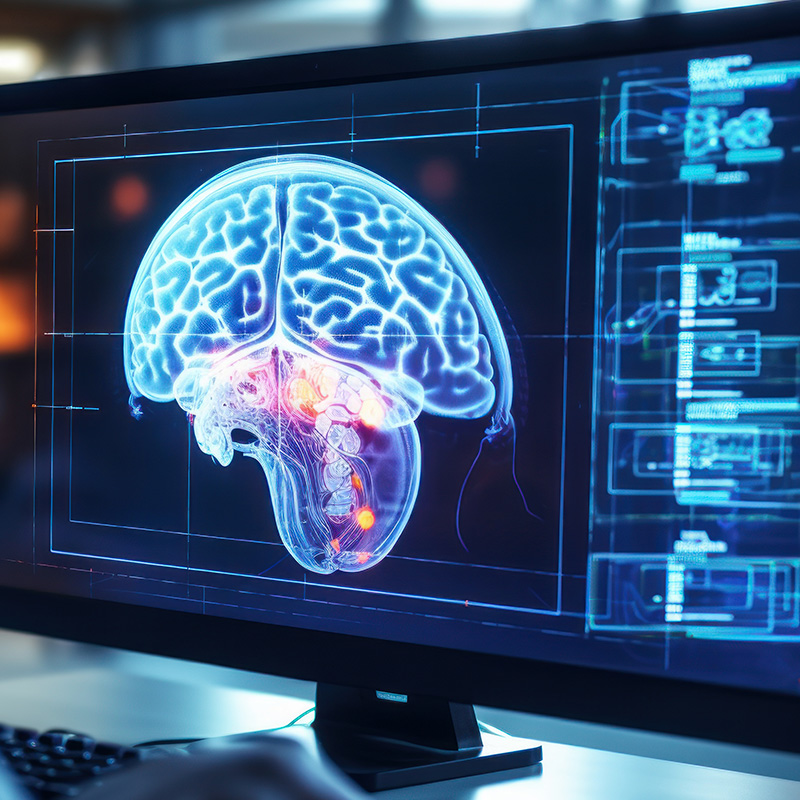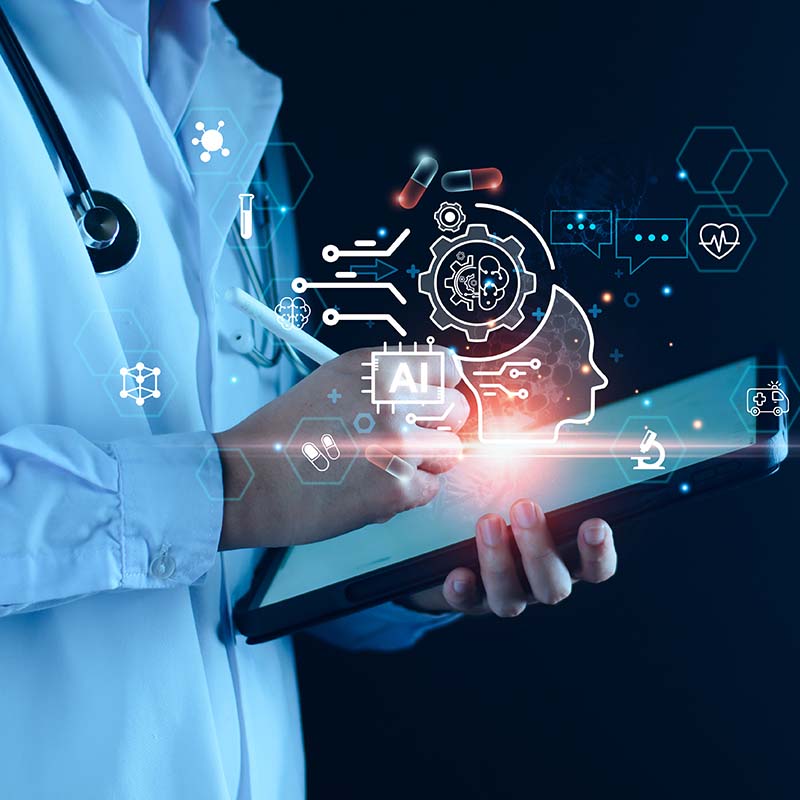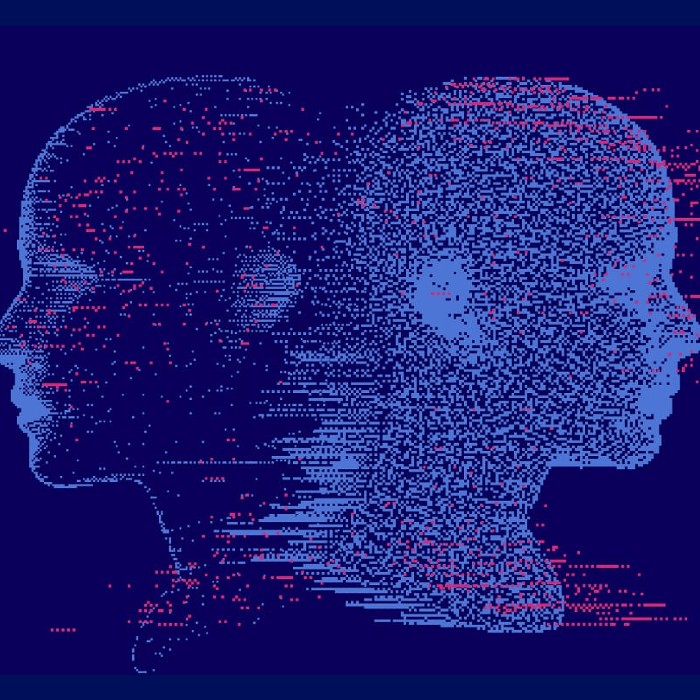Blinking green characters on a cathode-ray tube lit a spark in Alexandros Karargyris that’s taken him from his hometown in Greece to the frontiers of medicine and machine intelligence.
The journey started with Karargyris’s father, who ran a local school of computer science in the late 1980s and early ‘90s.
“He was one of the first who brought computers to my hometown,” Karargyris recalled in a Tech Barometer podcast interview for The Forecast.
The monochrome, green-screen computers of Karargyris’s youth weren’t much by 21st-century standards. But they were enough to put Karargyris on the road to becoming a global authority on applying artificial intelligence/machine learning (AI/ML) to medicine.
Today, Karargyris is helping a nonprofit called ML Commons develop open-source technologies that bring global standards to AI/ML initiatives. Karargyris co-founder and co-chair for the ML Commons’ Medical Working Group, which is helping doctors and researchers solve confounding medical riddles much faster.
The Medical Working Group’s efforts bore fruit with the release of MedPerf, an open-source platform designed to validate the mathematical models that are integral to AI/ML technologies. In July 2023, Nature Machine Intelligence published a research paper describing MedPerf. Karargyris co-authored the article.
“I'm glad to be working at the intersection of healthcare and artificial intelligence,” Karargyris told The Forecast.
His travels illustrate how medicine, mathematics, biology, computer science and cloud technologies are coming together in new and fascinating ways.
It Started With His Family
Karargyris’s family did much more than introduce him to early CRTs. His big brother got him interested in computer games. His mother was a biologist.
While he hoped to study engineering at university, he couldn’t shake his enthusiasm for biology.
“I saw the beauty of being able to build stuff, understand organisms and build treatments around them,” he said. “Eventually, I decided to go to electrical engineering. I'm very grateful that it happened because I really liked it. And, of course, we are living in a world with computers everywhere and AI is one of the major forces around us.”
Karargyris spent most of the decade from 2000 to 2010 building deep academic knowledge and laboratory experience in engineering, computing and biotechnology. He earned a master’s degree in electrical and computer engineering at the National Technical University of Athens, where he worked on things like using computers to detect lung cancer in pictures produced by cameras inserted into human bronchial tubes.
Next, he earned his doctorate in computer science and engineering at Wright State University in Dayton, Ohio. There, he developed a technique to flag abnormalities like polyps in video feeds transmitted by wireless, pill-shaped cameras in the human digestive tract.
After that, he moved to the National Library of Medicine, part of the National Institutes of Health. One of his projects included image-processing algorithms for finding evidence of tuberculosis in digital chest X-rays to be deployed in under-resourced regions of the world.
He did more work on machine learning and computer imagery in healthcare with IBM’s Almaden Research Lab in Silicon Valley. One project focused on conceptualizing a device to scan the human eye for evidence of diseases or abnormalities. In 2021 he returned to Europe and he was a researcher at the Institute of Image-Guided Surgery of Strasbourg in France until 2023.
All these achievements made Karargyris a natural fit for joining a quest to improve the effectiveness of AI/ML in clinics and labs worldwide.
Why Medicine Needs Machine Learning
“If you go right now to an operating room or a radiology department, there's so many sensors and techie gadgets everywhere lighting up,” Karargyris said.
“Imagine what it does to the clinicians when they have to ingest all this information, process it and make a critical decision.”
The profusion of data from these devices is beyond the human capacity to process it. This is where machine learning comes in, using learning algorithms to create, for example, deep neural networks that teach themselves to detect distinct patterns in an x-ray. If the pattern reveals a tumor, doctors find it sooner and patients stand a better chance of survival.
The linchpin of this system is a statistical model fine-tuned to accurately predict a desired outcome and guide treatment. Karargyris, for instance, researched and developed a model for using a mobile app to help prevent skin cancer.
Creating a model takes bioscience only so far, however.
“A model knows nothing,” Karargyris cautioned. “You have to train it.”
For instance, images showing diseased and healthy tissue provide essential training data. The model instructs a computer to examine the training data, compare it with new data like a digital x-ray, and draw inferences about the meaning of pixel patterns within the x-ray.
Bias in the model can corrupt these inferences. Karargyris and his MedPerf team is trying to tackle this flaw by establishing consortium-led benchmarks for model quality assessment. These benchmarks increase the likelihood of useful inferences, drive whole communities to target laser-focused goals and improve healthcare delivery through AI.
Accuracy is crucial because research studies are subject to sampling bias. A model trained by data taken only from young men, for example, might produce faulty results for clinicians diagnosing diseases in elderly women.
“You need to keep all this medical data private, so you have privacy concerns,” Karargyris said.
Medical institutions are reluctant to send sensitive data over a network for analysis by an AI model. MedPerf’s proposed solution relies on federated evaluation.
“The data never leaves the hospital,” Karargyris added. Clinicians in any location can run a benchmark on a model registered on MedPerf and evaluate it with their local data. MedPerf’s team applies standards and best practices to help ensure model evaluation leads to clinically insightful results (e.g., identify bias, health equity, etc.).
“These AI systems are ubiquitous and they're getting better and better,” Karargyris said.
Benchmarking with MedPerf can help ensure that medical professionals and their patients benefit from these improvements.
The Cloud’s Role in Medical AI
Infrastructure stalwarts like Intel, Nvidia and Nutanix are helping MLCommons build its AI/ML innovations on a sound foundation. Nutanix’s role includes helping out with cloud-services software that enables processing the huge datasets that fuel AI/ML.
Moreover, Nutanix’s hyperconverged infrastructure (HCI) can bring the latest cloud technologies to any kind of data center, whether it’s on the premises of a hospital or university, or in remote locations run by the likes of Amazon, Google and Microsoft.
While many large, well-funded institutions can debate over whether to run AI/ML in the cloud or on-premises, researchers in some parts of the world don’t enjoy that privilege. They might not have access to computers with the latest graphics-processing units (GPUs) that empower data-devouring AI/ML applications.
“Even if you don't have resources like GPUs, you can easily get an account from the cloud providers and start training something and building something — as long as you have the knowledge and the vision,” Karargyris said.
This underscores why MLCommons is working on making its software run on multiple cloud platforms.
“Many hospitals and healthcare organizations don't have the infrastructure to run this, but they want to join this AI ecosystem,” he said.
Their chances are improving all the time. MedPerf can enable the training of AI models regularly to ensure that researchers and clinicians can access the latest validated models.
This will help clinicians hone ever-sharper accuracy in their diagnoses.
“Think about having a foundation model that is customized to a particular person,” Karargyris said.
That would place knowledge accumulated around the world over several years in the hands of a single doctor hoping to tailor a cure to a particular patient’s cancer or diabetes.
It’s appropriate that Karargyris’s innovations can be traced to Greece, the homeland of celebrated scientific pioneers like Archimedes and Hippocrates. But credit must be paid to the modern-day scientists in the household he grew up in.
“You see now the influence of one’s family and strong parents,” he said.
Editor’s note: Learn more about the Nutanix platform for AI, including Nutanix GPT-in-a-Box, a full-stack software-defined AI-ready platform designed to simplify and jump-start your initiatives from edge to core.
Tom Mangan is a contributing writer. He is a veteran B2B technology writer and editor, specializing in cloud computing and digital transformation. Contact him on his website or LinkedIn.
Jason Lopez and Ken Kaplan contributed to this story. Lopez is executive producer of Tech Barometer, the podcast outlet for The Forecast. Kaplan is Editor in Chief for The Forecast by Nutanix.
© 2023 Nutanix, Inc. All rights reserved. For additional legal information, please go here.











